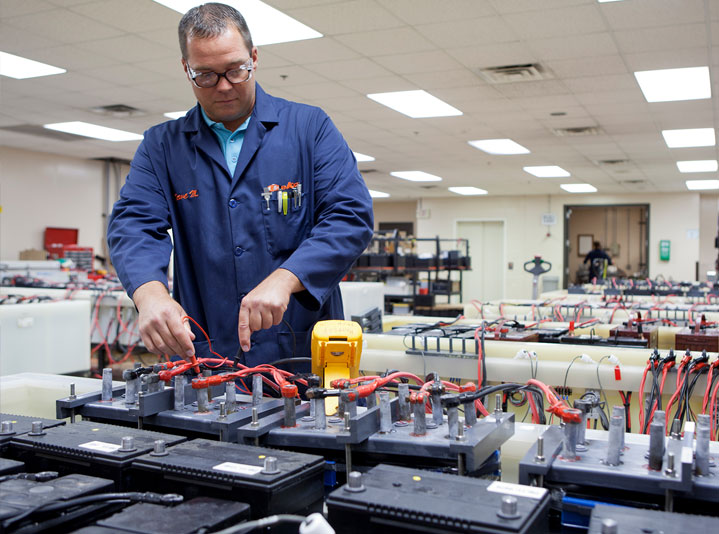Employee Safety
Lead battery manufacturers and recyclers strive to exceed OSHA standards and are continually advancing to protect employees, the community...
BCI Blood Lead Program
Since 1997, Battery Council International (BCI), member lead battery manufacturing and recycling companies have voluntarily adopted a successful program to achieve occupational health goals for their employees that are significantly more protective than those required by the Department of Labor’s Occupational Safety and Health Administration (OSHA).
These efforts consistently demonstrate the industry’s commitment to protecting workers from inappropriate exposures to lead. Since the implementation of the program, BCI members have achieved continuous year-over-year reductions in employee blood lead levels.
At the program’s beginning, the industry signed a five-year agreement with OSHA to seek improvements in worker blood lead levels across the industry. Based on the success of the first five-year effort, the industry has continued the program and regularly strengthened it over the years, with the most recent updates adopted in April 2022.
Over the past 25+ years, the industry has regularly set lower blood lead level goals to spur a reduction in worker blood lead levels and drive continuous improvement across the industry. Today, the program’s goal is to have all workers maintain their blood lead levels at or below 20 µg / dL by 2025, which is significantly more stringent than OSHA’s current regulatory requirements standard of 50 micrograms per 100 grams (50 µg / 100 g) of whole blood.
Currently, OSHA requires that any employee that has a single blood lead level (BLL) test at 60 µg / 100 g or greater, or an average BLL of 50 µg / 100 g or greater1, to be removed from lead exposure in the workplace, until they have a BLL below 40 µg / 100 g.

BCI member companies who participate in the Voluntary Blood Lead Program, agree to continuous improvement in the management of employee lead exposures. In addition, they strive to achieve blood lead levels as low as reasonably practicable respecting the application of the hierarchy controls.
BCI facilitates best practice sharing and learning among its members. Examples include BCI-sponsored resources and conferences for occupational health and safety professionals to learn from experts, expand their knowledge, and to share continuous improvement practices.
The program also provides member companies with best practice resources to develop corporate blood lead control programs, including sample plans to monitor and manage employee lead exposure. These tools, including employee biological monitoring and training protocols – which involve testing and tracking the blood lead levels of lead-exposed staff members – provide a template from which companies of all sizes can build robust worker health policies and programs.
The industry also partnered with OSHA to develop OSHA’s eTool for lead control best practices. The engineering and work practice controls addressed in the eTool have been shown to reduce employee lead exposure and are provided to assist employers and employees in complying with the OSHA Lead Standard.
Since the implementation of the voluntary blood lead program, BCI members have regularly demonstrated year-over-year reductions in employee blood lead levels. The results speak for themselves: Today, a significant majority of BCI member workers maintain blood lead levels below 10 µg / dL, with the industry average below 9 µg / dL, and dramatically lower than OSHA’s current regulatory requirements of 50 µg / 100 g of whole blood.
BCI is proud to be leading the way to inspire others to adopt better measures to protect workers from inappropriate lead exposure.
1Blood lead levels (PbB) are most often reported in units of milligrams (mg) or micrograms (μg) of lead (1 mg=1000 μg) per 100 grams (100g), 100 milliliters (100 ml) or deciliter (dl) of blood. These three units are essentially the same. 29 CFR 1910.1200 App. A. (II)(B)(3). The OSHA regulations were written using the “100 ml” unit of measure, but today the use of “μg/dL” is generally preferred.
As an industry, we have an incredible opportunity to lead the way in environmentally responsible recycling, and we must hold ourselves to the highest standards in doing so.